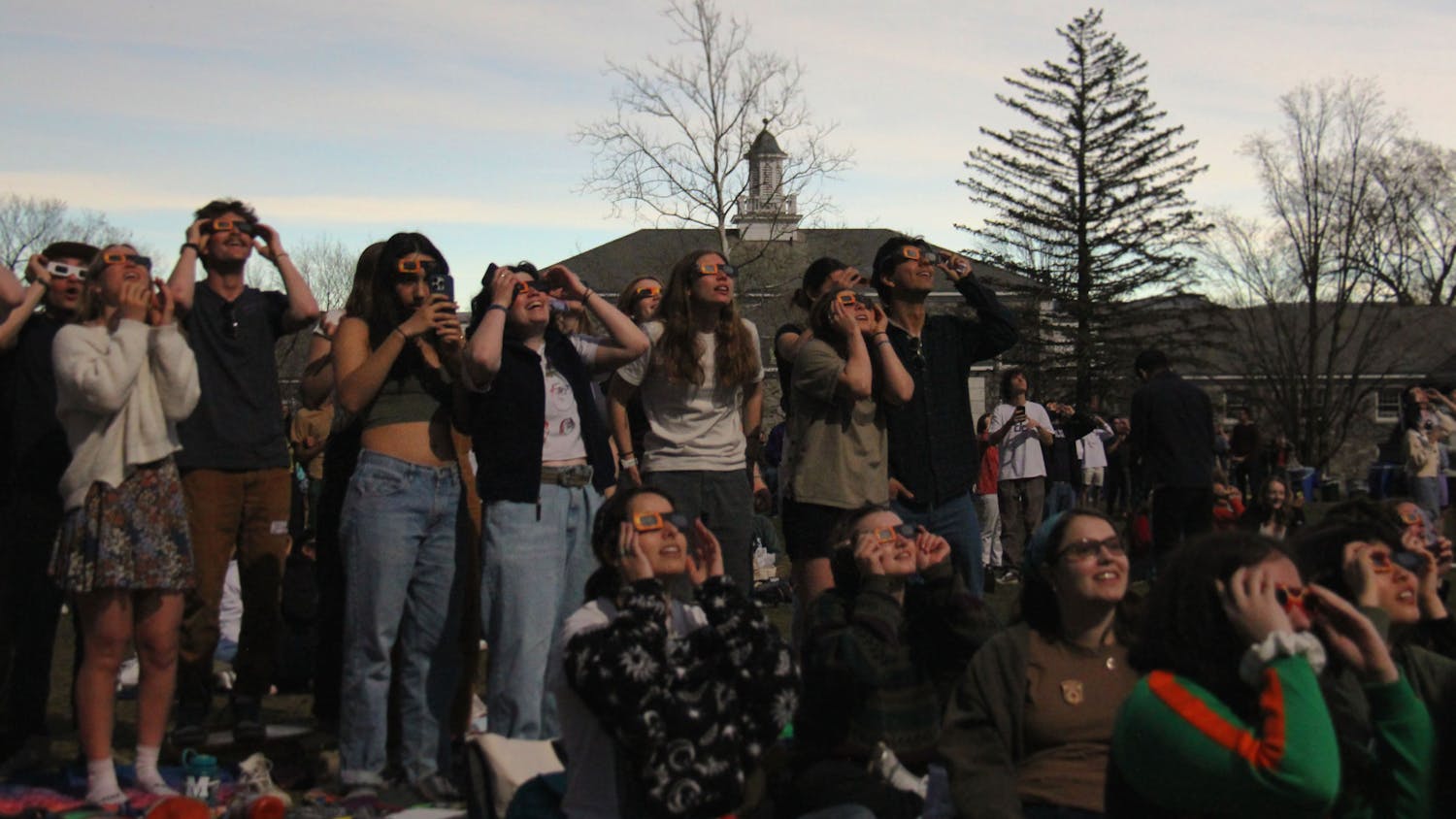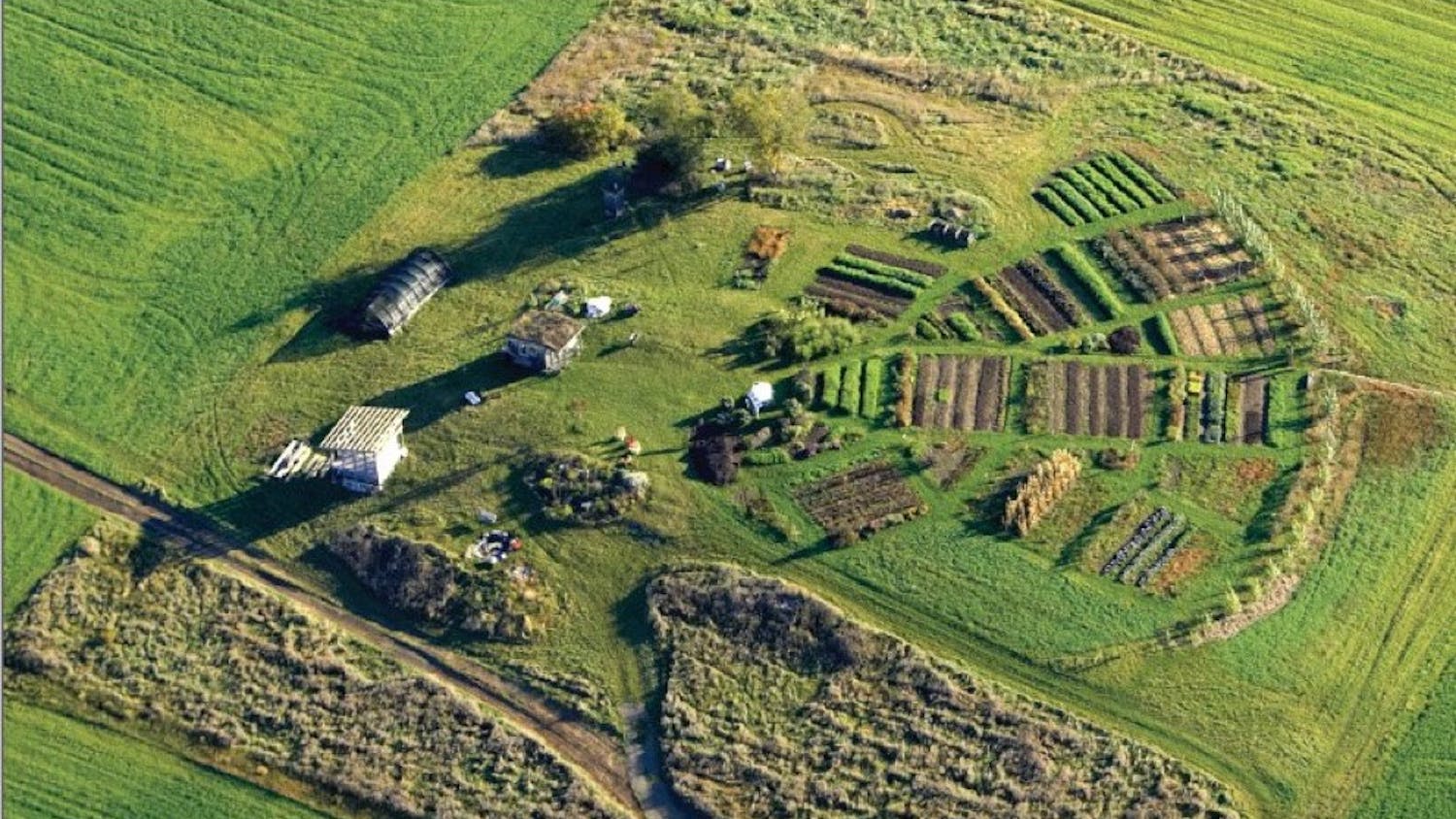At an Atwater dinner hosted by Architecture Table, a design interest club, on Wednesday, Nov. 4, Douglas Brooks of Vergennes presented a proposal to build a traditional Japanese teahouse on The College’s campus. The teahouse would be built by students over multiple academic semesters and could service classrooms and student groups year-round.
Brooks is a boatbuilder who traveled to Japan in 1990 and has since used the Japanese apprentice model of building in his work. He will teach a course in Japanese boatbuilding for the third time this upcoming winter term. At the dinner, he said that the overarching theme of the project, like his boatbuilding class, is contemplation, and that this permeates through all stages of the design and construction process.
“The teahouse will be a partnership with students and faculty from across the curriculum,” he said. “The goal of the project would be two-fold: to construct a space that could be used for instruction and contemplation; and to use the construction and implementation of that space as a model for project-based learning and an interdisciplinary, interactive pedagogical tool for the immediate future and for years to come.”
In Fall 2011, the College invited Akira Takemoto, a tea master at Whitman College in Washington, to demonstrate the traditional Japanese tea ceremony of chanoyu. Stephen Snyder, Dean of the Language Schools and Kawashima Professor of Japanese Studies, was one of several faculty members who began to think about the possibility of students designing, building and studying in a teahouse on the College’s campus.
“I was struck by the demonstration in 2012 and had soon talked with Mr. Brooks about the idea of building a teahouse on campus,” said Snyder. “It seemed ideally suited for learning about a range of topics in Japanese culture, from carpentry and traditional pedagogy to Buddhism and ceramics. With Douglas, I assembled a group of faculty to begin conversations.”
The discussions among faculty resulted in an intermediate studio course in the Department of History of Art and Architecture in spring 2013. Taught by a visiting assistant professor, Wendy Cox, the course, titled Time for Tea, had students propose teahouse designs and sites on the College’s campus.
Six of the thirteen students in the course proposed siting the teahouse at the pond east of the Mahaney Center for the Arts plaza. One student proposed sitting it in the winter garden at the Axinn Center at Starr Library, and another pro- posed siting it west of the Chateau by the existing grove of spruce trees.
The project lost momentum after the architecture studio, said Snyder, as the College decided not to address new con- struction of permanent buildings for the time being. After hearing about the presentation on Nov. 4, he is excited that the proposal has come back to students’ attention.
Snyder said, “I’m thrilled for all the educational opportunities because of the building and programming of a teahouse. This cultural contemplative space dove- tails so beautifully with a cluster of new campus priorities. I am also hoping the the building process can span the undergraduate College and the Language Schools in the summer, where interest in both Japanese culture and contemplative practice are high.”
On Nov. 5, President of the College Laurie L. Patton, spoke at the Henry Sheldon Museum for a members dinner, at which Brooks was in attendance. In her remarks, she spoke about the teahouse idea, and an audience member compared it to program she pioneered at Duke University in which a single intellectual theme was cultivated to engage the en- tire college community. Brooks, as well as other core members of the proposal team, said that the teahouse project would fol- low a similar trajectory.
In a statement shared with Patton on Nov. 9, Brooks, students and faculty shared their vision for the project: “We are committed to realizing this project with the broadest possible collaborations across the curriculum. We wish to invite all faculty to use the project in their class- es, and we hope all members of the college community not directly involved in the creation of a teahouse will nevertheless be inspired by it.”
Prasanna Vankina ’18, a student organizer for the project, held a meeting with President Patton that same day to discuss the teahouse proposal. She said that Patton was very receptive to the idea and ex- pressed wholehearted support. According to Vankina, Patton said that the teahouse will have to be considered within the master plan of the College, which also involves the town, but that she would help in any way she can to make this happen.
Pieter Broucke, Architecture Studies Track Head, Professor of History of Art and Architecture and Director of the Arts, also said that the master plan would be a factor. He said that the siting of the building should be part of a student-run study in which alternatives are explored and presented, and the view provided by the teahouse will be an important parameter.
Broucke said, “Before this goes anywhere, a much more detailed proposal needs to be formulated, and that will take time. That proposal would need to explore several sites, be in line with the master plan, be up to codes of fire, accessibility, safety, budget and also funding. Only then could we consider actually building a teahouse.”
Broucke has also been a key player in this proposal since Takemoto’s visit to Middlebury in 2011. He applauded the project for its relevance to many departments and academic disciplines. He said, “On the intersection between architectural design, architectural history, Japanese history and culture, and, as a ‘public’ work, it would visibly underscore the global identity of Middlebury.”
Vankina said one of the most defining features of the proposal is the traditional Japanese process of construction, which uses a master–apprentice dynamic and emphasizes ways of learning. Brooks implemented this style of teaching in his Japanese boatbuilding course, which she took in Winter 2015. Reflecting on the ex- perience, she noted the most important thing she learned was observation.
“It is such an intentional way to learn. We are so quick to ask questions in our lives — whether it’s through Google or consulting a professor,” said Vankina. “This class reminded me to slow down, and simply observe. I think that’s the essence of this teahouse as well. How can we be more mindful of not only our learn- ing, but also our being?”
On-Campus Traditional Japanese Teahouse Proposed
Comments



